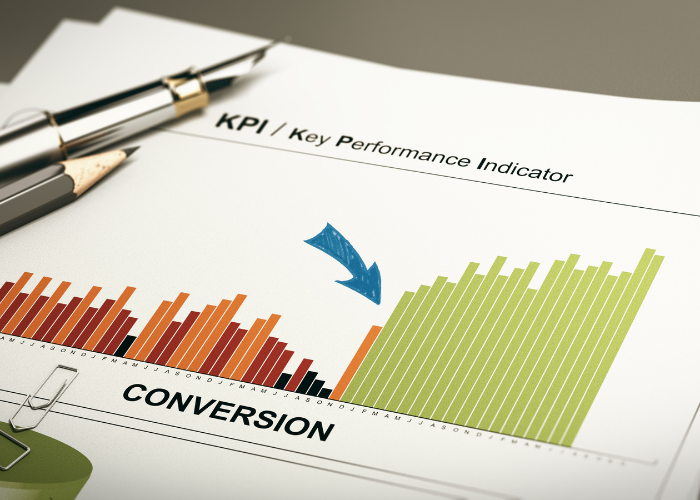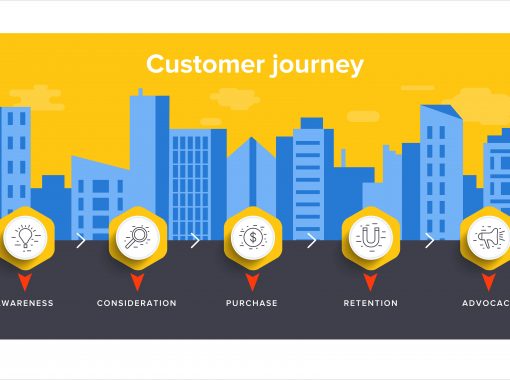
What Is Conversion Copywriting and How To Write Copy That Converts
As you implement your business’s content strategy, it’s exciting to see blogs and articles moving up the search engine ranks. It means your company is visible, people are clicking through to your website, and you provide information consumers find interesting and relevant.
However, how much of that traffic is converting into sales for your company? Visitors are great, but awareness on its own doesn’t pay the bills. Conversion copywriting is a blog strategy that helps you drive highly-qualified leads to your website, helping to increase sales and grow the business.
What Is Conversion Copywriting?
Conversion copywriting is persuasive, engaging writing that motivates readers to take a specific action, usually related to the page’s content. For example, a blog for a kitchen appliance eCommerce business discussing eight delicious family dinners to make in a toaster oven might highlight specific models suited to the task.
SEO and conversion copywriting can work together, but they are different. SEO focuses on driving traffic to the website with relevant keywords. Conversion marketing aims to capture readers’ attention and direct them to a predefined action, from signing up for the newsletter to purchasing a product related to the content.
What Is Conversion in Blogging?
In blogging, conversion is the process of directing readers toward an action. Your blog is a magnificent opportunity for conversions, but it requires incorporating a conversion mindset into the entire blog strategy.
Conversions in blogging start with your topic selections. You want to offer authoritative, relevant, and engaging content, but you want to tailor each topic to align with a specific conversion action.
For example, an online job search platform may design a cluster of blogs around specific tech careers. They may include information like how to qualify, what employers want, and the income potential of each. These topics lead seamlessly into a call to action (CTA) that invites job seekers to apply through the agency.
However, a blog, article, or website employing conversion copywriting is only one part of an effective sales funnel. Read on to learn more about sales funnels, how to optimize your blog posts for conversions, and examples of companies that are doing it well.
What Is a Sales Funnel?
A sales funnel is a journey you construct to nurture prospects into customers. Some people will land on your website ready to buy, but many others will be at the research or investigation stage of their purchasing process. An effective sales funnel captures leads and builds a relationship with them while they’re getting ready to buy.
Building the best sales funnel for your business includes a process of testing and refining. The basic sales funnel is as follows:
- Prospect lands on a blog or landing page.
- You offer them something of value in exchange for their email (a download, eBook, discount, or exclusive access).
- You nurture the prospect with a series of emails (but not too many!). Each email offers something of value to the prospect and includes a CTA that invites them to buy.
- You track, analyze, and refine the process to increase conversions.
Each of the above examples results in some kind of conversion. Capturing an email address, having prospects sign up for your newsletter, or downloading an exclusive offer are all specific conversions that lead toward the big goal of converting leads into customers.
In this way, conversion marketing is a long game. You create buying opportunities for customers who are ready right now but also capture as many prospects as possible into your funnel to build awareness of your products or services and continue to nurture the sale.
5 Examples of Effective Conversion Marketing
Before diving into how to optimize your blog for conversions, here are some examples of companies that are doing it well.
SEMrush
SEMrush is a comprehensive keyword and content tool. Their blog is an in-depth look at search trends and how to optimize your search traffic.
Immediately after landing on the page, visitors can start using SEMrush’s free keyword research tool. Later, a pop-up offers a free trial of the product. Readers who scroll to the bottom of the page can opt-in for their newsletter to stay up-to-date on search trends.
SEMrush gives readers relevant, desirable ways to enter their sales funnels and continue the relationship with them.
HubSpot
HubSpot has built a remarkable inbound marketing system. They often appear near the top of the search results for SEO, inbound marketing, email marketing, and related topics.
In this blog on A/B testing, there is an offer for a free trial in bright orange at the top right corner of the page. Within a quick scroll, readers can download a free A/B testing guide and kit (in exchange for their email, of course). The free guide offer also appears in a pop-up at the bottom right corner and the bottom of the page.
This offer is highly relevant to HubSpot, which includes an A/B testing functionality on its platform.
CrazyEgg
CrazyEgg uses heat maps to show businesses how users navigate their websites, helping them improve layout, optimization, and conversions. In this extensive blog post on website color palettes, a simple, compelling call to action stays on the right side of the screen from beginning to end. It states, “Make Your Website Better. Instantly. Free 30-Day Trial.”
It’s a natural pairing because people searching online for website color palettes are likely looking for ways to improve their website.
Loom
A simpler example is this short blog from Loom on using asynchronous video for sales. Loom is a video platform that caters to businesses, so the topic is tailored to a pain point their audience may experience.
There are several embedded links to additional information and conversion opportunities on the Loom website, and a clear CTA button at the beginning and the end catering to enterprise clients.
Elasticpath
Elasticpath is a modular, composable eCommerce solution. This blog on eCommerce merchandising mistakes to avoid speaks to eCommerce companies trying to optimize their stores and improve their businesses.
At the same time, since not everyone understands what a composable eCommerce solution is, Elasticpath has an additional burden of helping readers grasp the benefits of their product.
They have a CTA for a free trial at the top and the middle of the page. There are two opportunities to sign up for their newsletter. Additionally, the page includes two infographics with product features and benefits to help readers better understand what Elasticpath offers them.
What do these five examples illustrate? They all do the following well:
- Have blog topics that cover something a target customer might search for when they need the type of solution the company offers.
- Have relevant, highly visible CTAs in several places on the page.
- Have a CTA for people ready to move forward (signing up for a free trial) and for prospects still gathering information (receiving a free download or newsletter).
Conversion experts often recommend keeping your action goals simple. You don’t want to clutter a page or confuse readers with too many options. Two CTAs for different stages in the buyer’s journey are plenty.
How Do I Optimize My Blog Posts for Conversions?
To optimize your blog posts for conversions, select relevant, engaging topics, make them interesting to read and easy to scan, add applicable internal links, and align your CTAs with the content. Here are 13 steps to follow to optimize your blog post for conversions.
- Identify and understand your target audience.
- Align each topic and piece of content with user intent.
- Craft an irresistible (but accurate and relevant) headline.
- Hook the reader in the introduction.
- Give your audience the information they want and need (provide value).
- Make your content readable by infusing it with personality.
- Include internal links to relevant content.
- Don’t be shy about directing readers to relevant products. You don’t have to make a hard sell, just let them know it’s there and make it easy for them to buy if they want.
- Offer free trials, free downloads, or other incentives to take action.
- Include engaging design elements.
- Make conversions super simple and fast (limit forms to three fields maximum — two is better).
- Add compelling CTAs near the top, middle, and bottom.
- Show readers how much your customers love you: include social proof.
How Do I Track the Performance of a Blog Post?
Once you’ve created a few conversion-focused blog posts, you’ll want to see how they perform. Here are a few key metrics to help you track which posts perform best so you can refine and improve your strategy.
1. Pageviews
Pageviews tracks how many people view your post. Blogs that rank higher in the search engine or have gained more traction on social media with shares and likes typically outrank others. Pageviews is a simple metric that gives you a sense of how different blogs rank against each other.
2. Average Time on Page
You may have an irresistible headline, but if people click away shortly after landing on your blog post, you know you have some work to do. Spice up the opening, check the layout (maybe add some images), and ensure that the topic matches what the readers expect when they click to read the headline.
3. Comments
If you don’t have staff members who can moderate your comments section, you may want to leave it off because it can be a spam magnet. However, if you can monitor comments, it’s a great way to both measure engagement and get feedback on your content.
4. Top Viewed Posts
A post’s views will increase over time, so you want to take the date published into account when looking at this metric. If one post has been up for three months and has the same number of views as others that have been up for a year, you know you’ve hit on a hot topic.
If you have a post outshining the others, it’s an excellent opportunity to create more blogs on similar topics.
5. Returning Visitors
When visitors return to reference a blog two or more times, you know you’ve created useful content. Notice the format you used, the topic, and incorporate those into your blog strategy.
6. Conversions
You can set up conversion tracking through your analytics software or using tracking codes. This will measure the number of visitors who take the desired action on your page.
For example, if you set up a landing page to give away a free guide in exchange for a lead’s email address, the conversion would show you the percentage of people who download the guide.
Conversion tracking can be a powerful metric because it allows you to test different versions of a landing page or offer to improve your response rate.
7. Social Shares
Your ability to track social shares will depend on the analytics or marketing automation software you use. Some will give you the number of users that came to a page from each social platform. Others will give you precise social share numbers.
Social shares tell you if your headline, artwork, and topic hit a chord. It’s another great indicator for topics and types of content that connect with your audience.
Maximize Your Blog’s Benefits
Conversion copywriting helps you leverage your blog into a sales machine. It gives focus to your topic selection, aligning your content with what your target customers really need. It also helps you think about the buyer’s journey and how you lead them from the first encounter with your company into becoming a customer and, hopefully, an enthusiastic advocate for what you offer.
At ContentWriters, our professional writers are subject matter experts, which means we can help you develop a conversion marketing content strategy. For help scaling your content production or developing a strategy to increase blog conversions, connect with us today.
Joan Weisman’s strong research skills, SEO knowledge, adaptability of style and voice, and passion for staying current make her an asset for freelance web content, SEO, and copywriting.




